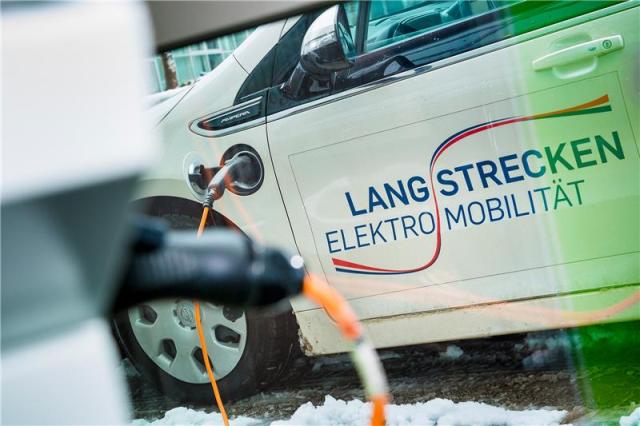Mar 11 2015
Future visions of electromobility include a comprehensive charging station network. However, it would be impossible to monitor them all in order to protect them from being manipulated. Under the umbrella of the “SecMobil” project, engineers at the Ruhr-Universität Bochum (RUB), headed by Prof Dr Tim Güneysu and in collaboration with project partners, developed a new sensor for charging stations which unites three functions: in one chip, charging current is measured, manipulation to charging station is detected and all data are encoded, before being forwarded to the provider for invoicing purposes.
 The RUB charging station detects manipulations and ensures data protection of the users’ personal information. © RUBIN, photo: Gorczany
The RUB charging station detects manipulations and ensures data protection of the users’ personal information. © RUBIN, photo: Gorczany
Secure charging station at the Ruhr-Universität campus
Six research groups of the Faculty of Electrical Engineering and Information Technology at RUB and external project partners built a charging station that implements a completely new security concept, funded by the Federal Ministry for Economic Affairs and Energy. Charging measurement is often carried out via the magnetic fields generated by the current flowing through the charging station into the car. Accordingly, frauds can manipulate the measurement by, for example, placing a permanent magnet in the right spot at the charging station so that the meter runs too slowly. Certainly, the researchers at RUB cannot prevent any charging station from falling victim to such manipulations, but they can reliably detect them. The station measures the current flow in several spots along the charging cable. All measurement points are in a predefined correlation to each other, which the attacker does not know. For this purpose, the current flow is measured at several spots along the cable that span a defined but secret correlation system. Anybody attempting to tamper with the measurement process will inevitably infer deviations within the correlation system that will trigger a warning to the charging station provider.
Transmitting invoicing information to the provider in a secure manner
After charging is completed, information regarding electricity consumption, charging time, charging location and user-related data have to be forwarded to the charging station provider for invoicing purposes. This information is typically transmitted over the public mobile GSM or LTE network. If an attacker hacks into the charging station via its communication interface to this network, he could digitally alter the correctly measured data retrospectively. The secure hardware sensor from Bochum addresses this issue as well. By means of cryptography it ties all information inextricably into one authenticated packet within the sensor hardware. Second, the packet is encrypted for transmission to the energy provider. Hence, even if somebody is able to successfully hack the software part of the station, he cannot retrospectively change the data packet without being noticed since it was cryptographically sealed in the hardware before.
Detailed article in “RUBIN”, the RUB’s science magazine
A detailed article with pictures can be found in the online magazine RUBIN, the RUB’s science magazine: http://rubin.rub.de/en/homepage and images in the download page are free for use for editorial purposes, provided the relevant copyright notice is included. You would like to receive a notification when new RUBIN articles are published? Then subscribe to our news feed at http://rubin.rub.de/feed/rubin-en.rss.